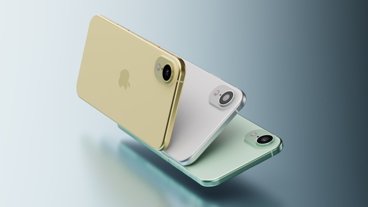Backtracking on its report from last week, the Chinese-language Economic Daily News now claims that it's Foxconn, not Quanta, who has secured a contract with the Mac maker to manufacturer its new all-in-one desktops.
In a report published Monday, the paper also identified Foxconn Group's Foxconn Precision Components and Catcher Technology as the duo that will be responsible for stamping out the iMac's new "magnesium-aluminum alloy chassis."
Interestingly, the paper also reported that Foxconn Precision Components and Auras Technology would team to supply "the PC's cooling module." Further details were not provided, and therefore its unclear if the report indicates a change to the iMac's traditional fan-based cooling system.
DigiTimes, another publication situated near Apple's manufacturing facilities, recently cited sources who said Apple and rival PC makers HP, Acer and Dell had each agreed to use a new family of quad-core desktop chips from Intel in systems due early in 2009, though the report did not identify which Apple systems were bound to receive the parts.
The chips — the Core 2 Quad Q8200 (2.33GHz/4MB L2), Core 2 Quad Q9400 (2.66GHz/6MB L2), and Core 2 Quad Q9550 (2.83GHz/12MB L2) — are low-power desktop chips operating at 65W compared to the 55W of the current iMacs' mobile processors. Therefore, a decision by Apple to employ the chips inside the iMac line could signal a need for modifications to the computer's cooling methods.
In any case, it's believed that quad-core chips are bound to turn up in the iMac line around the same time that Apple begins priming Mac OS X 10.6 Snow Leopard for release. The next-generation operating system will ship with Grand Central technology designed to leverage Macs with an increasing number of processor cores.
Last week, DigiTimes' report on the trio of new quad-core chips was partially verified when Engadget revealed that the Voodoo-designed HP Firebird PC 803 iMac-shaped gaming machine would marry a NVIDIA nForce 760i SLI chipset, dual NVIDIA GeForce 9800S cards, and the aforementioned Core 2 Quad Q9550 chip.
Assuming DigiTimes' report plays out in regards to Apple, it would signal either a new desktop class system on its way from the Cupertino-based company or significant architectural change for the iMac line. The family of 20- and 24-inch desktops have long shared an internal makeup similar to the Mac maker's notebook lines, running on the same family of mobile chips.
According to the Economic Daily News, Apple has placed orders for approximately 800,000 new iMacs per quarter starting in mid-January. And while many of the system's specifications remain a bit of a mystery, one certainty appears to be a move towards NVIDIA chipsets.
 Slash Lane
Slash Lane













 William Gallagher
William Gallagher

 Christine McKee
Christine McKee
 AppleInsider Staff
AppleInsider Staff
 Chip Loder
Chip Loder

 Malcolm Owen
Malcolm Owen









91 Comments
It would be great if Apple can devise a cooling system that requires no internal air-flow thus eliminating dust buildup.
It would be great if Apple can devise a cooling system that requires no internal air-flow thus eliminating dust buildup.
That would be interesting. A heat pipe could transfer the heat to the outer shell. The entire shell could be the heat sink and that might be enough surface area to cool it. I am not sure they would go for it if it requires having external fins.
Let's hope this new cooling system won't be a repeat of those notorious water-cooled G5s. Let's see. A quad-core processor in a thin iMac case with as little fan noise as possible. Seems like liquid cooling is going to be required. Best to make sure those iMacs come with drainage holes.
That would be interesting. The entire chassis could be the heat sink and that might be enough surface area to cool it.
The whole back of the chassis would have to be one huge, ribbed heatsink, and even that probably wouldn't be enough to keep it all cool enough. Even the smallest amount of airflow from the slowest and quietest of fans makes a huge difference to temps.
That would be interesting. A heat pipe could transfer the heat to the outer shell. The entire shell could be the heat sink and that might be enough surface area to cool it. I am not sure they would go for it if it requires having external fins.
Exactly! Like the Mac Mini would have the top surface as the actual heat sink linked directly the processor and video chips beneath. No liquid flow would be necessary since the Mini's upper surface is large enough. I would assume there might be some heating problems if the device is used on its side.